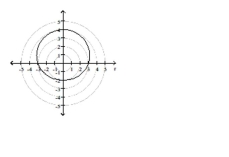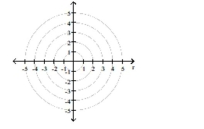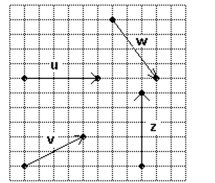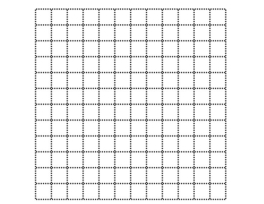A) ![]()
logarithmic spiral
B) ![]()
logarithmic spiral
C) ![]()
logarithmic spiral
D) ![]()
logarithmic spiral
F) A) and C)
Correct Answer

verified
Correct Answer
verified
Multiple Choice
Write the vector v in the form ai + bj, given its magnitude v and the angle it makes with the positive x-axis. -
A)
B)
C)
D)
F) B) and C)
Correct Answer

verified
Correct Answer
verified
Multiple Choice
Use the given vectors to find the indicated expression. - Find .
A) 48
B) 24
C) 58
D)
F) A) and C)
Correct Answer

verified
Correct Answer
verified
Multiple Choice
Test the equation for symmetry with respect to the given axis, line, or pole. - the line
A) Symmetric with respect to the line
B) May or may not be symmetric with respect to the line
D) undefined
Correct Answer

verified
Correct Answer
verified
Multiple Choice
Find the unit vector having the same direction as v. -
A)
B)
C)
D)
F) B) and C)
Correct Answer

verified
Correct Answer
verified
Multiple Choice
Match the graph to one of the polar equations.
-
A)
B)
C)
D)
F) All of the above
Correct Answer

verified
Correct Answer
verified
Multiple Choice
Find the position vector for the vector having initial point P and terminal point Q. - and
A)
B)
C)
D)
F) A) and C)
Correct Answer

verified
Correct Answer
verified
Multiple Choice
Write the vector v in the form ai + bj, given its magnitude v and the angle it makes with the positive x-axis. -
A)
B)
C)
D)
F) A) and B)
Correct Answer

verified
Correct Answer
verified
Multiple Choice
Graph the polar equation.
-

A) ![]()
B) ![]()
C) ![]()
D) ![]()
F) None of the above
Correct Answer

verified
Correct Answer
verified
Multiple Choice
Write the vector v in the form ai + bj, given its magnitude v and the angle it makes with the positive x-axis. -
A)
B)
C)
D)
F) B) and D)
Correct Answer

verified
Correct Answer
verified
Multiple Choice
Find all the complex roots. Leave your answers in polar form with the argument in degrees. -The complex fifth roots of
A) ,
B) ,
C) ,
D) ,
F) None of the above
Correct Answer

verified
Correct Answer
verified
Multiple Choice
Decompose v into two vectors v1 and v2, where v1 is parallel to w and v2 is orthogonal to w. -
A)
B)
C)
D)
F) B) and C)
Correct Answer

verified
Correct Answer
verified
Multiple Choice
Solve the problem. -If , find .
A) 5
B) 7
C)
D) 25
F) A) and C)
Correct Answer

verified
Correct Answer
verified
Multiple Choice
Use the vectors in the figure below to graph the following vector.  -
-

A) ![]()
B) ![]()
C) ![]()
D) ![]()
F) C) and D)
Correct Answer

verified
Correct Answer
verified
Multiple Choice
Find the dot product v · w. - and
A) 1
B) 3
C)
D) 2
F) None of the above
Correct Answer

verified
Correct Answer
verified
Multiple Choice
Solve the problem. Leave your answer in polar form. - Find zw.
A)
B)
C)
D)
F) B) and C)
Correct Answer

verified
Correct Answer
verified
Multiple Choice
Use the given vectors to find the indicated expression. - Find .
A) 148
B) 4
C) 172
D) 0
F) A) and C)
Correct Answer

verified
Correct Answer
verified
Multiple Choice
Find the angle between v and w. Round to one decimal place, if necessary. - and
A)
B)
C)
D)
F) B) and D)
Correct Answer

verified
Correct Answer
verified
Multiple Choice
Choose the one alternative that best completes the statement or answers the question. Find the direction angles of the vector. Round to the nearest degree, if necessary. -
A)
B)
C)
D)
F) B) and C)
Correct Answer

verified
Correct Answer
verified
Multiple Choice
Write the vector v in the form ai + bj, given its magnitude v and the angle it makes with the positive x-axis. -
A)
B)
C)
D)
F) B) and C)
Correct Answer

verified
Correct Answer
verified
Showing 121 - 140 of 253
Related Exams